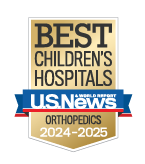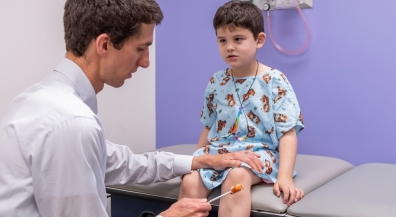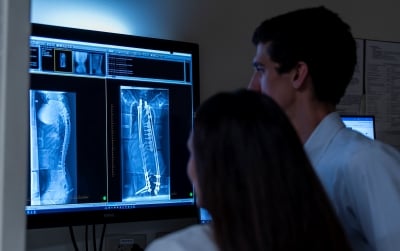Spine Care


The spine care experts at Children’s Mercy Kansas City manage all aspects of a wide variety of spinal conditions in children, adolescents and young adults. These conditions include spine deformities such as scoliosis and kyphosis as well as other conditions such as disc herniations, fractures/trauma of the spine, tumors of the spine and spondylolysis/spondylolisthesis.
With years of dedication to the specialty of pediatric spine care, our pediatric spine surgeons and their team are ready to provide expert care for your child and their spine care needs, whether it be surgical or non-surgical intervention. Our advanced practice providers (APRNs) are also specially trained in pediatric orthopedics and spine and work alongside our surgeons as a trusted resource. Meet the Children’s Mercy spine care team.
Spine care consultations

Your child may be evaluated by a pediatric orthopedic surgeon, a pediatric orthopedic physician, or an advanced practice pediatric orthopedic nurse. This team-based approach allows us to schedule and evaluate your child as soon as possible and start them on the path to treatment if needed.
When you call to make an appointment with our Spine Care team, we will ask questions and send you some paperwork so we can schedule you with the right team for your child’s needs. We recommend that your child have X-rays of their spine completed prior to referral in order to assess your child appropriately.
The day of your consultation
Please plan to arrive 15 minutes prior to your scheduled appointment to allow for the check-in process. If you arrive late, your appointment may be delayed or rescheduled. Please call us at (816) 234-3075 if you are running late.
If you need to cancel your appointment, please provide 24-hour notice so we may provide that clinic appointment to another family. During your child’s appointment, they will have a physical therapy evaluation and additional imaging if needed. At the conclusion of that appointment, you will leave with a diagnosis and plan for treatment.
Scoliosis and spinal fusion: Kiki's story
At only 2 years old, Kiki Moon began tumbling, dancing and cheering, so when she was diagnosed with scoliosis at 12, she didn’t let it stop her. After surgery to straighten her spine in May 2020, she recovered quickly and is now competitively cheering all year!

Early onset scoliosis: Quinn's story
Why is Quinn Liberman smiling? The 7-year-old is finished with serial Mehta casting and moving to the next phase of treatment at Children’s Mercy for her scoliosis—Rigo Cheneau bracing. To celebrate, she took time for a unique photo shoot documenting her journey.

- Spine Care
- Speak with Our Team
- Bracing Options for Scoliosis
- Growing Rods
- Halo Gravity Traction
- iSpine Clinic
- Mehta Casting
- Microdiscectomy for Disc Herniation
- Outreach Services
- Spinal Fusion
- Spine Care Consultations
- Spine Surgery: What to Expect
- Spondylolysis and Spondylolisthesis
- Vertebral Body Tethering
- Meet the Team
- Orthopedics